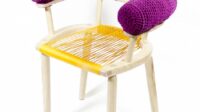
Crafting with Confidence: Mastering Cricut Techniques
In the realm of crafting, Cricut machines have emerged as versatile tools that empower hobbyists and professionals alike to unleash their creativity. With their ability to cut, write, and score a myriad of materials, Cricut machines provide endless possibilities for crafting projects. This comprehensive article delves into the intricacies of Cricut techniques, guiding readers through the essential knowledge and skills required to master this cutting-edge technology.
Getting to Know Cricut Machines
Cricut machines come in various models, each catering to specific crafting needs. The entry-level Cricut Joy is ideal for beginners, while the intermediate Cricut Maker and Cricut Explore Air machines offer advanced features for more intricate designs. The top-of-the-line Cricut Maker 3 expands these capabilities even further, empowering users to cut thicker and denser materials with ease.
Materials and Tools
A diverse array of materials can be used with Cricut machines, including paper, cardstock, vinyl, fabric, wood, and leather. Choosing the appropriate material depends on the intended project and desired outcome. Other essential tools for Cricut crafting include a cutting mat, weeding tools, a scraper, and a brayer.
Understanding Design Software
Cricut Design Space, the online software used to create and send designs to the machine, is an integral part of the Cricut experience. This software allows users to import designs, create their own, and make adjustments to suit their projects. Features such as layering, welding, and slicing provide limitless possibilities for customizing and combining shapes.
Cutting Techniques
Basic Cutting:
This fundamental technique involves selecting a design, choosing the appropriate material and blade, and sending the command to the machine. By adjusting the cut settings to match the material thickness, clean and precise cuts can be achieved.
Scoring:
Scoring is used to create creases or guidelines in materials without cutting them fully. This technique is ideal for projects like greeting cards, paper crafts, and home décor items. The scoring blade creates fine lines that allow for easy folding and embellishments.
Perforating:
Similar to scoring, perforating creates a series of small holes in materials. This technique is commonly used for tear-away edges, decorative borders, and ventilation in designs. The perforating blade punches tiny holes, allowing for a clean and even separation.
Kiss-Cutting:
Kiss-cutting is a delicate technique that involves cutting only the top layer of a multi-layered material. This technique is used for applications such as vinyl decals, stickers, and stencils. It requires precise adjustment of the blade depth to ensure the top layer is cut without damaging the underlying layers.
Writing and Drawing
Text Writing:
Cricut machines can write and draw text and calligraphy using a variety of pen types. This technique opens up possibilities for creating custom invitations, greeting cards, and personalized gifts.
Drawing:
With the Cricut Pen Tool, users can draw intricate designs, patterns, and illustrations directly onto compatible materials. This technique is ideal for creating artwork, decorative accents, and personalized projects.
Advanced Techniques
Layering:
Layering involves stacking multiple layers of cut materials to create depth and dimension. This technique is used for projects like 3D models, paper flowers, and layered décor. Aligning and adhering the layers with precision is crucial for achieving a polished result.
Welding:
Welding is the process of combining multiple shapes into a single, cohesive design. This technique allows users to create complex shapes that would not be possible to cut as individual pieces. Welding is particularly useful for projects like custom logos, intricate cutouts, and decorative borders.
Slicing:
Slicing involves dividing a shape into multiple sections along predefined lines. This technique is used for creating puzzle pieces, jigsaw designs, and projects with intricate segmentation.
Troubleshooting Tips
Design Issues:
- Ensure that the design is properly sized and formatted for the material being used.
- Check for any overlapping or duplicated shapes that could cause cutting errors.
- Calibrate the machine regularly to ensure accurate cuts.
Material Issues:
- Select the appropriate material setting for the type of material being used.
- Use a fresh cutting mat to prevent dulling the blade.
- If the material is too thick or dense, adjust the blade depth or consider using a stronger blade.
Machine Issues:
- Regularly clean and maintain the machine to prevent clogs and ensure smooth operation.
- Check the blade for wear and tear and replace it if necessary.
- If the machine is not cutting or drawing properly, restart it or contact Cricut support.
Inspiration and Resources
Online Galleries:
Explore countless project ideas and free designs on Cricut’s online galleries.
Join crafting communities and social media groups to share projects, ask for advice, and find inspiration.
Tutorials and Workshops:
Attend online or in-person workshops conducted by Cricut experts to learn advanced techniques and master the software.
Access a wealth of tutorials and resources on YouTube, Pinterest, and other online platforms.
Conclusion
Crafting with confidence using Cricut machines requires a combination of knowledge, skill, and inspiration. By understanding the essential techniques, mastering the design software, and troubleshooting potential issues, crafters can unlock the limitless possibilities of these versatile tools. With practice and dedication, anyone can elevate their crafting game to new heights, creating unique and personalized projects that ignite creativity and bring joy. Embrace the world of Cricut and unleash your inner artist, crafting with confidence and a touch of magic.






